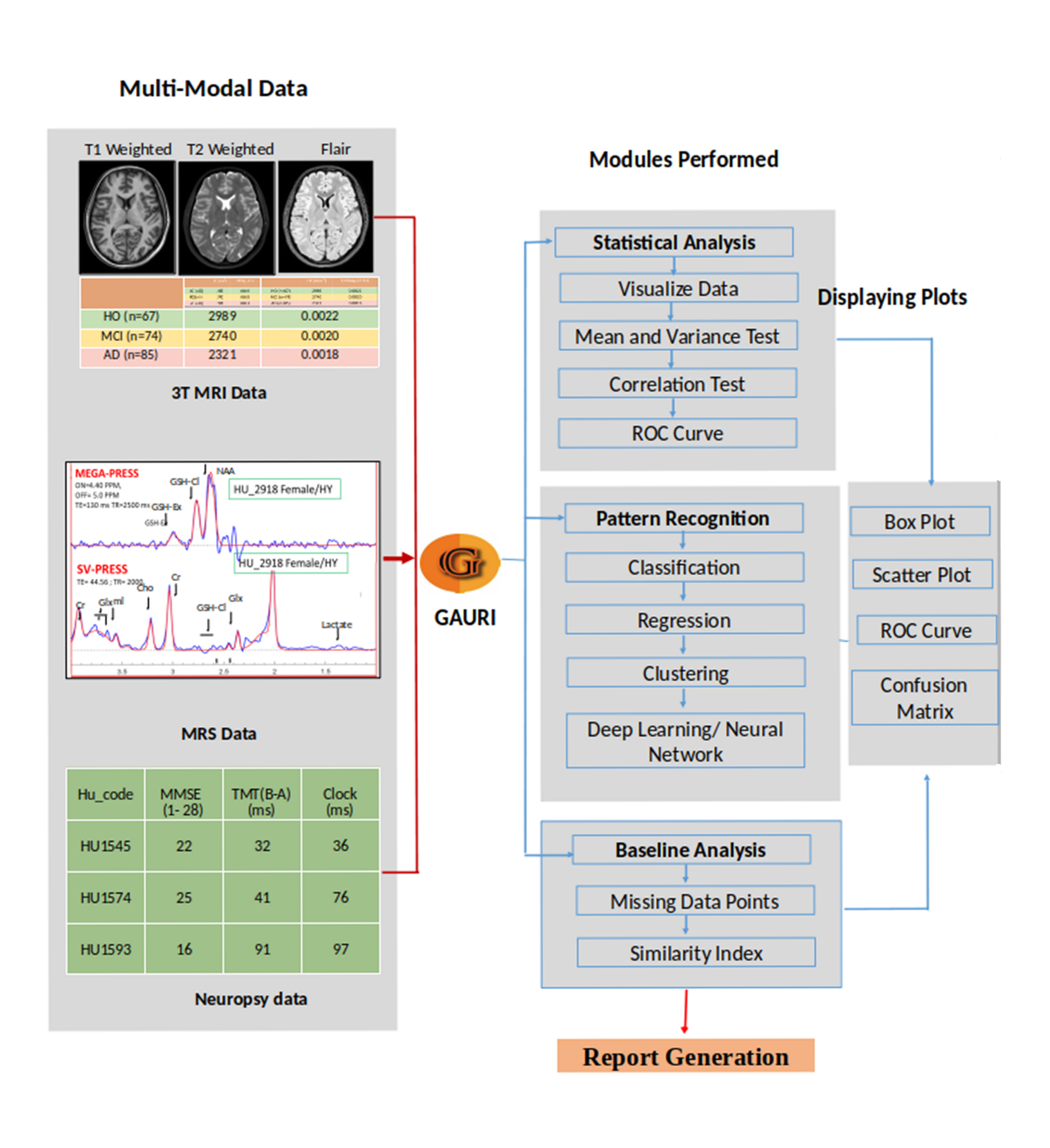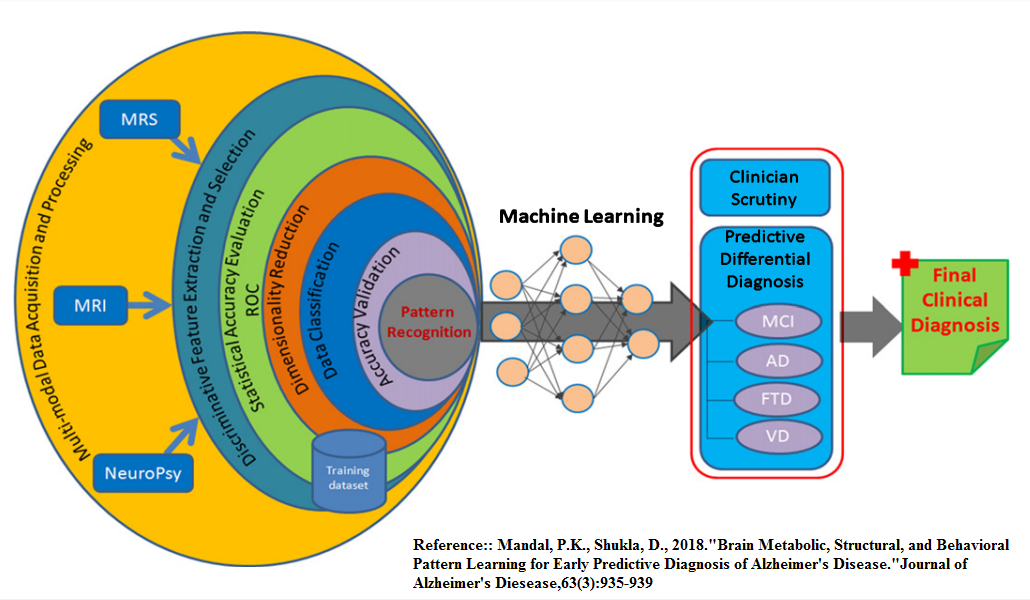

GAURI relates to a method and a system that uses adaptive pattern recognition and learning schemes for predictive single or differential diagnosis, designed with magnetic resonance imaging modalities and neuropsychological batteries. This invention employs principles of pattern recognition and machine learning to analyze variations of neurochemicals under the controlled and diseased conditions. The integrated features in this embodiment comprises of processed proton (1H), Phosphorus (31P) or other multi-nuclei Magnetic Resonance Spectroscopy (MRS) data with interest metabolite peak areas, quantitative metabolite concentrations, anatomical features from processed and segmented MRI, neuropsychological evaluation scores for statistical analysis and metabolite pattern recognition with results in order to generate reliable multi-parametric diagnostic maps. The system and methodology developed under this claim integrates uni- or multi-modal non-invasive magnetic resonance imaging data from various sources for statistical analysis to filter out good biomarkers, which can also be used with other imaging modalities. This claimed methodology and system also performs statistical analysis and receiver operator characteristic (ROC) analysis for determining the diagnostic effectiveness of the characteristic neurochemicals as disease specific biomarkers. Data under analysis can be controlled for outlier detection and elimination preferably by determining cut-off thresholds. This methodology can be used to carry out cross-sectional, longitudinal studies and disease prognosis analysis.

Feature 1:
Utilization of supervised classifier model for neurodegenerative and neurodevelopmental disorder classification using non-invasive multi-modal features.
Feature 2:
A unified framework for cross-sectional and longitudinal disease profiling using anatomical, metabolic and neuropsychological evaluations.
Feature 3:
Brain metabolic mapping for healthy controls (as baseline) and selective neurodegenerative and neurodevelopmental diseases over different brain regions.
Feature 4:
Regression analysis based metabolic concentration baselines for brain region exploring the proximity with most probable disease class provided in system.
Feature 5:
Integration of machine learning on multi-modal imaging, spectroscopy and neuropsychological data features to provide early predictive diagnosis.
Feature 6:
Inclusion of statistical analysis features with ROC analysis to evaluate the significance of deduced biomarkers.